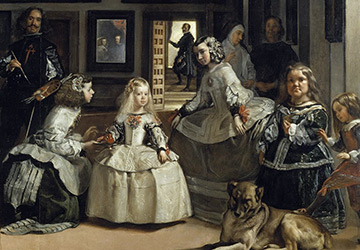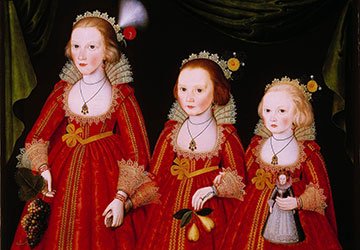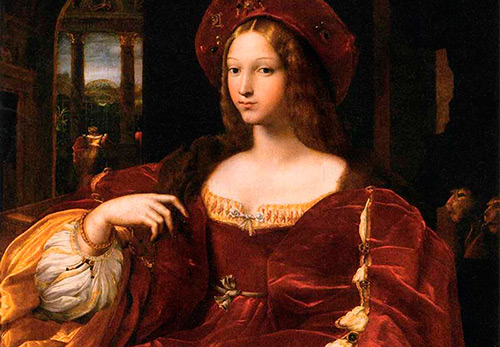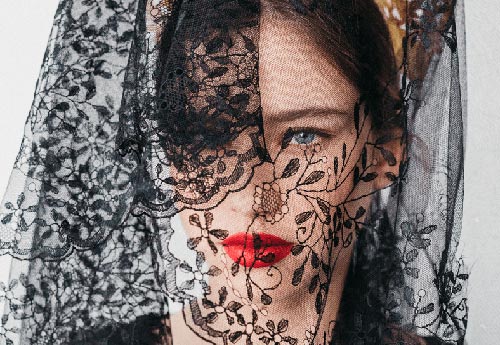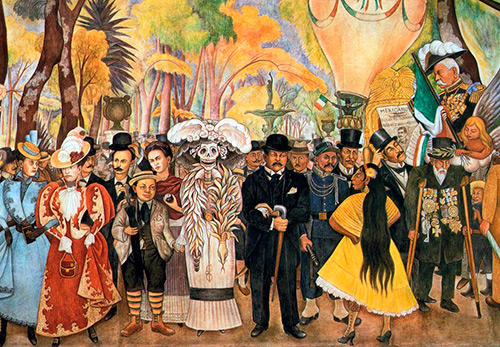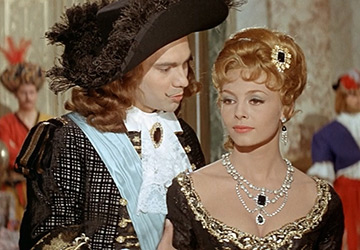Art
Spanish fashion of the 16th - 17th century
Spain of the 16th century - a maritime colonial Empire. In the 16th century, Spain is strong and powerful. At the same time, Spain remains a Catholic country, although the ideas of the Reformation are already spreading throughout Europe. Germany, England and the Netherlands are leaving the power of the Pope and Rome.
In 1540, the Jesuit order was founded in Spain and the period of the so-called Counter-Reformation begins - the struggle of the Catholic Church for its influence in Europe. Spain became the stronghold of the Counter-Reformation and Catholicism.
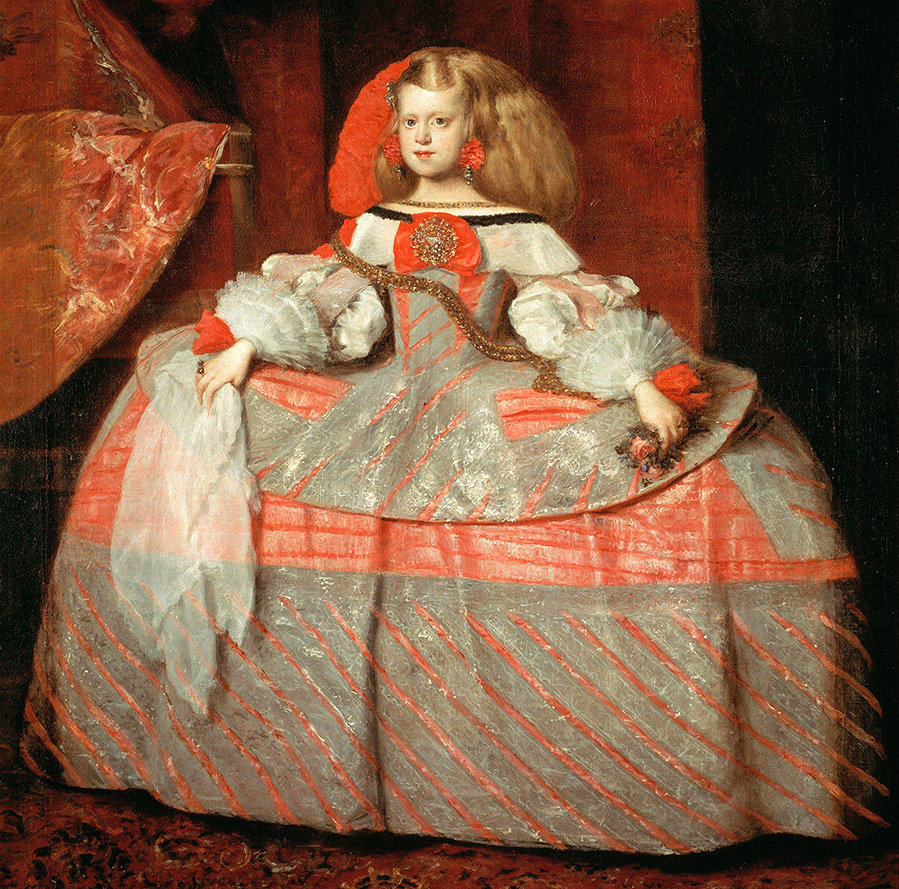
Diego Velazquez. Portrait of the Infanta Margarita. Around 1659
Skirt on a frame with figs (sometimes the diameter of the frame could reach up to three meters). This is the 17th century. and in many ways Spanish fashion is already influenced by French
And it is religion that primarily influences Spanish fashion. The second, no less significant factor that influenced the fashion of Spain of this period, will be the desire of the Spanish aristocrats to reflect in their costume their privileges and belonging to the chosen class.
Spanish fashion of the 16th century is also a struggle with luxury and at the same time for it. Indeed, on the one hand, true Catholics prefer a modest black color and a minimum of jewelry, everything should be modest, clothes should also completely hide a sinful body. On the other hand, Spain is an Empire, strong and influential, which means that its representatives must undoubtedly wear clothes that correspond to their far from modest status.
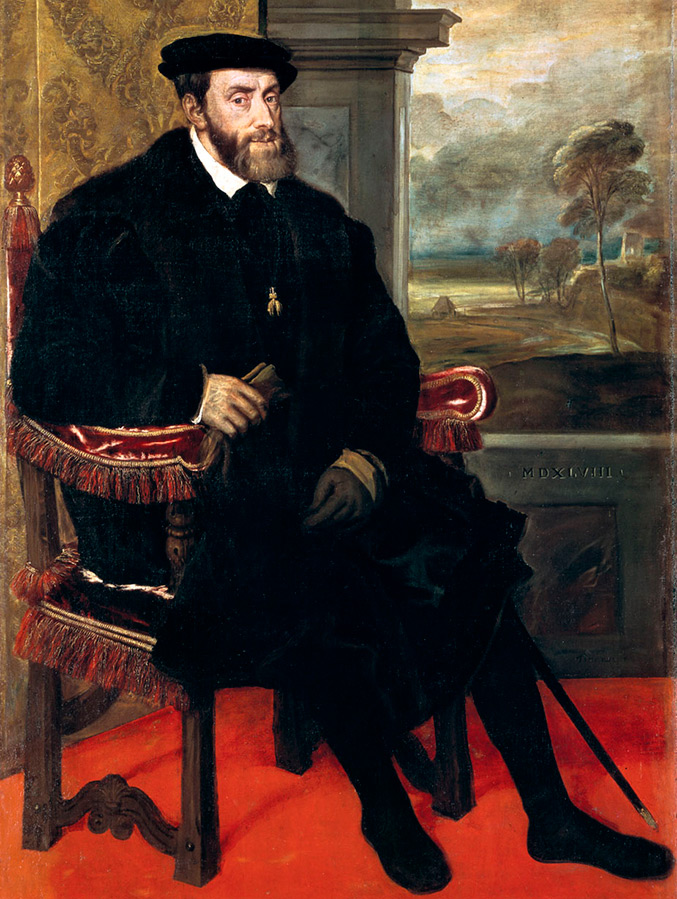
Titian. Portrait of Charles V
The struggle is going on with varying degrees of success. During the reign of Charles V, who went down in history as "the greatest master of ceremonies of all time", clothing was predominantly dark in color, but of unprecedented luxury. And already in 1534 an attempt was made to prohibit the Spanish courtiers from wearing gold embroidery and brocade, but it did not have much success.
Dresses are beginning to be decorated with stitched and cut out decorations. As a result, the Spanish king Philip II in 1556 stands up for luxury - Spanish women are allowed to decorate dresses with silver and gold borders and buttons, precious stones, pearls, and also wear silk fabrics that were previously banned.
Thus, Spanish fashion can be characterized by such a highly controversial concept as "luxurious modesty".
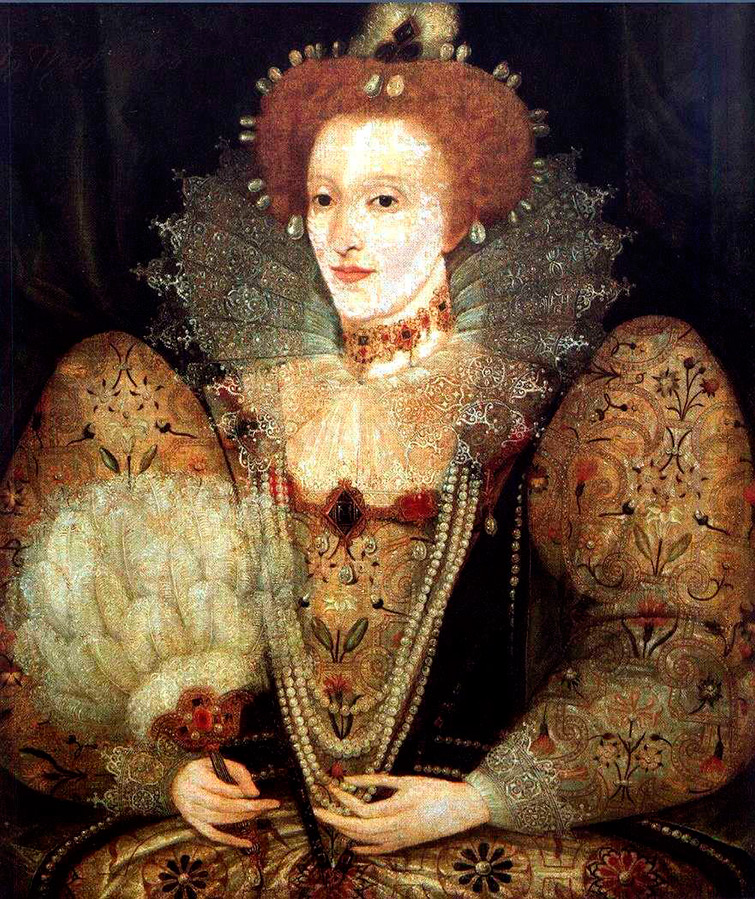
Portrait of Queen Elizabeth I of England
Fan-shaped collar influenced by Spain in European fashion
From the end of the 16th century to the beginning of the 17th century, Spanish fashion will influence the fashion of Europe - the Netherlands, Germany, England (in England, Maria Tudor and Elizabeth I dressed in Spanish fashion), France (the influence of Spanish fashion on French fashion can be traced in the toilets of the French queen Catherine de Medici).
However, in the 17th century, the influence of Spain, including in fashion, gradually faded away. Versailles and the court of the French king Louis XIV became a new center for the development of European fashion. The Spaniards themselves are reluctant to adopt French fashion. They don't like wigs and men's trousers with bows, they still don't like bright colors in their clothes.
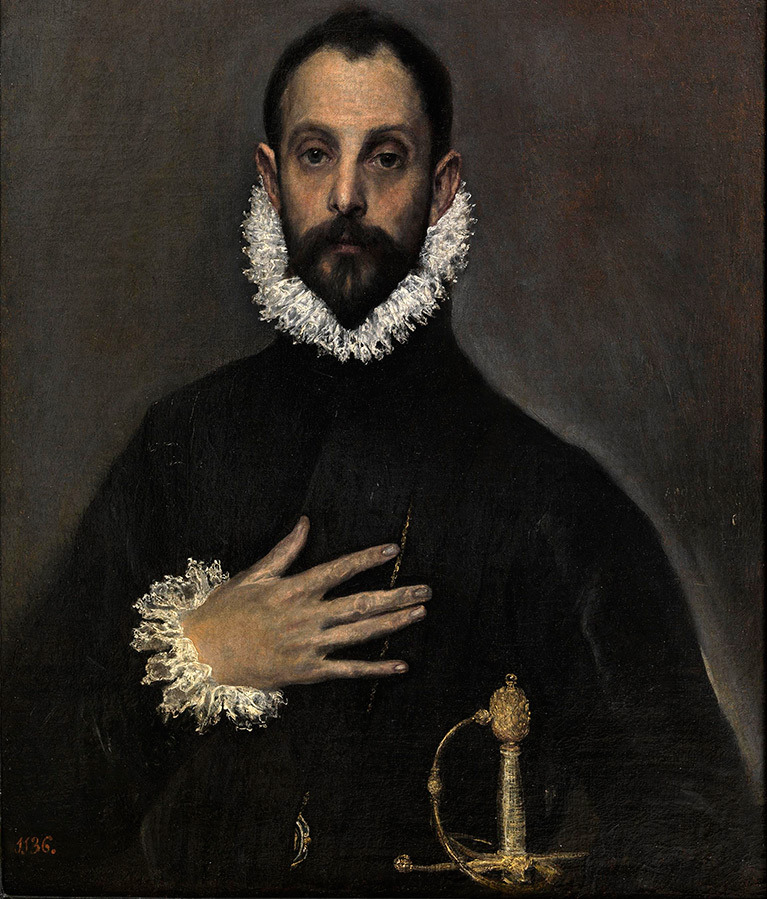
El Greco. Caballero with his hand on his chest. C. 1580
Black Spanish hubon with white collar and cuffs
The three main rules of Spanish fashion in the 16th century:
Rule one - clothes should look like armor. Massive clothes hide the whole body, while the fabrics are dense and heavy - velvet, brocade. And just as important with wireframes. For women, this is a corset and a frame for a skirt. Men have caftans stuffed with cotton and cardboard in the chest and shoulder areas to create a more masculine silhouette, like a knight in armor.
Second rule - dark colors, preferably black. But at the same time, embroidery is also permissible, because nothing looks so beautiful and expensive as gold on a black background.
Rule three - never forget about the collar.The collar is required. The collar was present in both men's and women's suits. The heads, the wits noticed, with Spanish collars looked like they had been laid on a platter and would soon be served. The collars were uncomfortable - it was very difficult to turn the neck in them, but on the other hand, such collars gave a truly regal look to the posture.
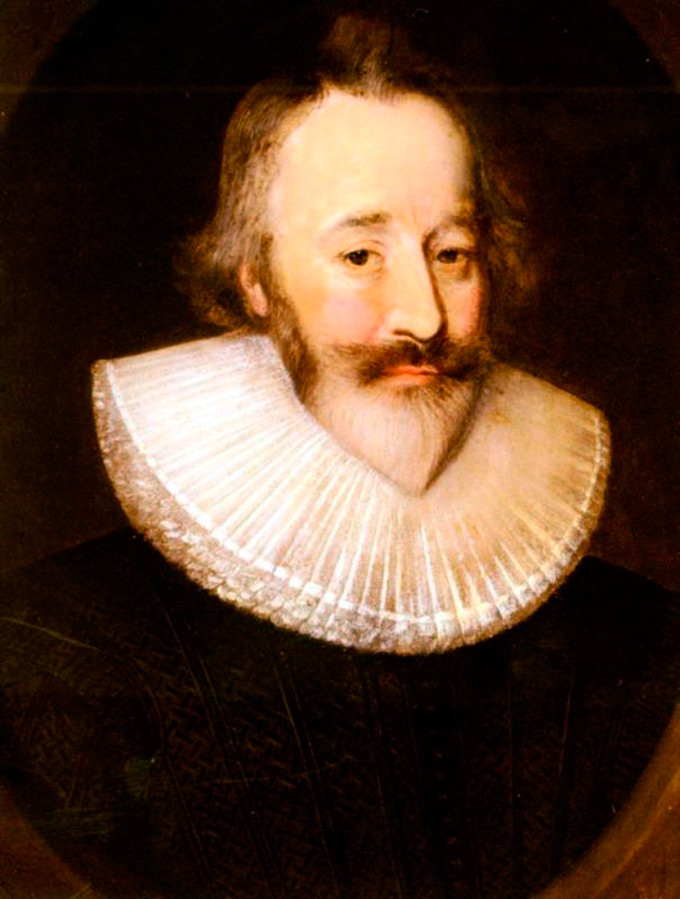
Cornelius Johnson. Portrait of Sir Henry
Round collar cutter
The main thing is the collar
In general, the collars in the Spanish costume of the 16th century are a separate story. It was originally a small white lace collar in the form of a ruffle. The collar of the lower shirt, which was laid out on top of the outerwear. However, over time, it transforms into a cutter collar or "millstones" (this collar is also called "gorghera" and "cuello").
Such a collar had a round shape, was made of thin linen and trimmed with metallic silver and gold lace. Mounted on a metal frame.
In England, the milling collar was transformed into the so-called Stuart collar (named after the Scottish queen). The Stewart collar did not have a monolithic round shape, but opened in front. By the beginning of the 17th century, such a variety of the Spanish collar as the Medici collar appeared - it was a high lace fan-shaped frame collar.
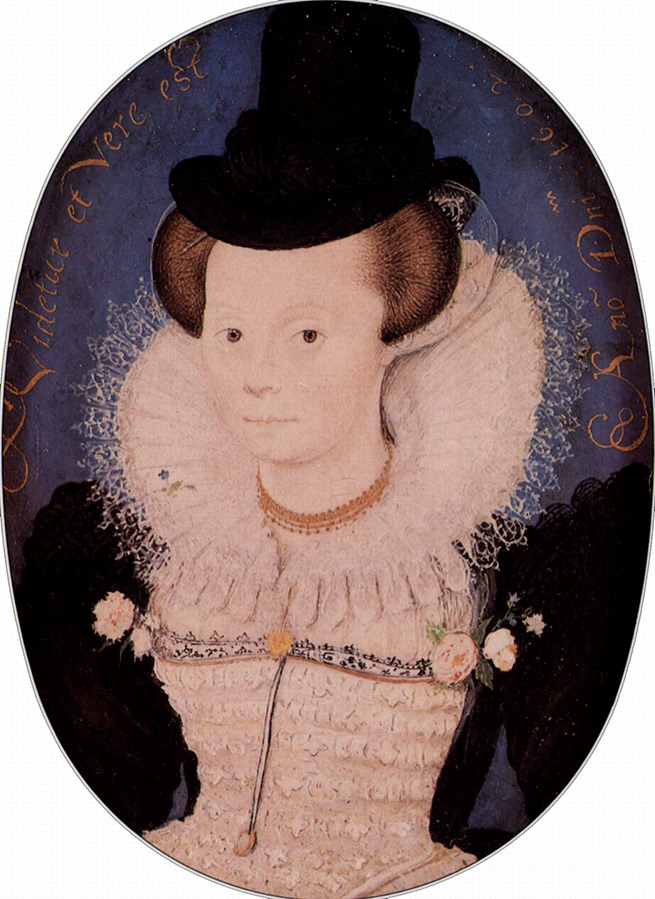
Nicholas Hilliard. Portrait of an unknown woman. 1602 g.
English version of the collar with a slit in the front - Stuart collar
On how the Spanish aristocrats dressed, following the court etiquette of the 16th century:
The first thing that the Spanish women wore was a white undershirt. Then the corset. In the 16th century, they did not yet know such a material for the manufacture of corsets as whalebone. Spanish women, unlike French women of the 17th century, had to wear rather coarse and heavy corsets. Corsets were made of metal mesh or vines, covered on both sides with fabric or cotton wool.
Horsehair pads were also worn with a corset, which hid the natural shape of the chest. It was believed that the bodice of the dress should be flat, so that there was not the slightest hint of the existence of a lady's breast.
Attached to the corset and the busk plate - wooden or metal, designed to flatten the abdomen and visual narrowing of the waist. Girls began to wear corsets at the age of 10-12. By the way, in those days it did not exist yet children's fashion... Both boys and girls wore adult clothing, only reduced in size.
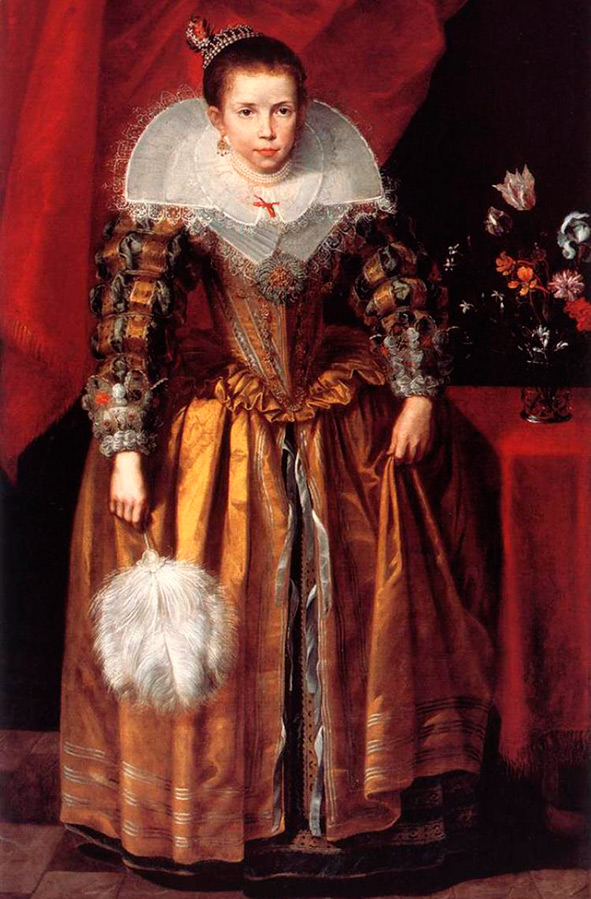
Portrait of a girl at the age of 10
Children's fashion in those days was no different from adult
Then the Spanish women wore dresses, and under the skirt of the dress there was a mandatory frame made of metal circles, decreasing in diameter, fixed on leather belts.
Dresses were decorated with embroidery, bows and decorative fasteners. The shoes of the Spanish women were without a heel, which in the 17th century was a surprise for French women of fashion. Also, Spanish women wore shoes with high wooden soles, something like a modern platform.
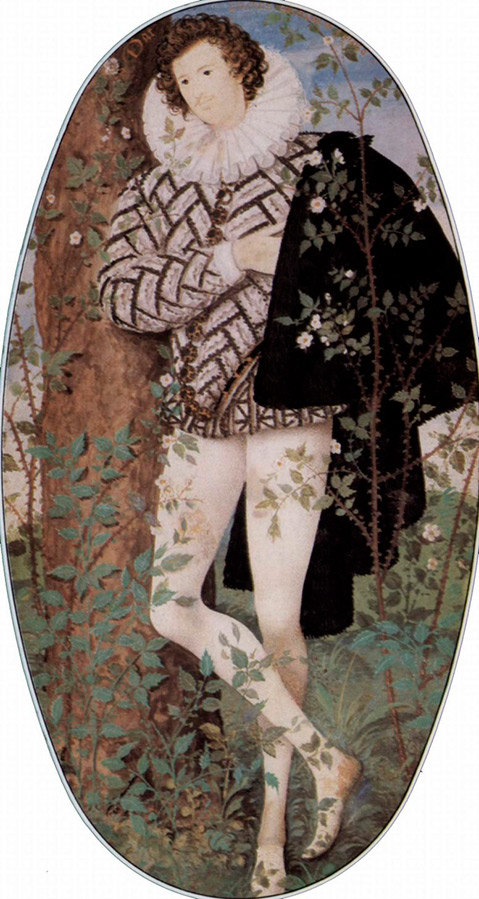
Nicholas Hilliard. The young man in roses. Around 1588
Hubon with bulges, collar-cutter, white stockings
On how the Spanish aristocrats dressed, following the court etiquette of the 16th century:
If religion and court etiquette ordered women to hide their entire body under sheath dresses and were forbidden to show the toe of a shoe and a neck. The neck was hidden by the same cutter collar. That men should have demonstrated their belonging to the knightly estate. And in this they were helped by clothing-armor.
The first thing that the Spanish aristocrats of the 16th century wore on themselves when they woke up in the morning were undershirts made of cambric or linen. The cuffs of such shirts were not hidden under clothes and played a decorative role. They were trimmed with lace, expensive for those times.
Then the khubon was put on. Waist- or hip-length clothing, close-fitting, with button fastening. In appearance, the khubon looked like a shell or knightly armor, since from the inside it was stuffed with fluff, hay, horsehair.
Short upper pants - kalses were put on their feet. They, like the hubon, consisted of a double lining and were stuffed with fluff or cotton wool, horsehair, thus creating a spherical shape on the hips.Silk stockings were worn under the pants of the kalses. In 1589 the knitting machine was invented and silk stockings became knitted.
On top of the hubon, they could wear short cloaks, as well as a ropa. Ropa - clothing with or without long sleeves, short, with a wide collar, made of velvet, silk or cloth and with a contrasting color lining. Ropa came to Spain from Italy. In Italy, such clothes were called simarra.
Comments and Reviews
Add a comment
Rating news
Shades of clothing that make women look younger
What shades of hair make women younger: rules and photos
Funny wedding dresses - photos and ideas
12 most expensive down jackets for the winter
How to look 25 at 40: tips from supermodels
Beautiful schoolgirls
Anti-aging haircuts and hairstyles for women
Fashionable skirts for autumn and winter
Fashionable women's trousers for the cold season
Fashionable and stylish sandals for summer 2024
Spring-summer 2024
 Fashionable dresses and tops with thin spaghetti straps
Fashionable dresses and tops with thin spaghetti straps
 Bandana tops: how to wear stylishly and beautifully
Bandana tops: how to wear stylishly and beautifully
 How to put together the perfect men's wardrobe for the summer
How to put together the perfect men's wardrobe for the summer
 Fashionable shorts for spring-summer 2024
Fashionable shorts for spring-summer 2024
 Fashionable skirts for spring-summer 2024: a guide to online shopping
Fashionable skirts for spring-summer 2024: a guide to online shopping
 The most fashionable dresses spring-summer 2024: styles and colors
The most fashionable dresses spring-summer 2024: styles and colors
 Fashionable total look 2024: image ideas and trends
Fashionable total look 2024: image ideas and trends
